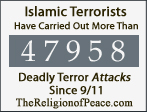New St. Louis AQ study published by Washington University proves once again shs is not a workplace health hazard
The test results prove secondhand smoke levels in St. Louis MO. establishments tested are 110 to 877 times SAFER than OSHA workplace air quality requirements.(See test result document at bottom of page)
Airborne nicotine levels ranged from 0.015 to 25.14 ug/m3. The median (interquartile range) airborne nicotine levels in venues that allowed smoking was 2.83 μg/m3 (0.57-4.56 μg/m3)
The information that interests us are the AQ test results of airborne nicotine in the smoking venues 0.57 to 4.56 (micrograms) ug/m3
Why do experts measure the trace chemical nicotine in secondhand smoke?
Nicotine is the only unique or "trace" chemical in secondhand smoke. If you measured for formaldehyde, the carpet and other interior sources of formaldehyde would corrupt the test result, formaldehyde is formed naturally in our atmosphere due to photochemical oxidation. Benzene is given off from burning foods in the kitchen or diesel exhaust outdoors so again a false reading would be obtained. Therefore, nicotine is the ideal chemical to measure to determine secondhand smoke concentrations in the air. And then our comparison to OSHA guidelines is the logical manner in which to determine if secondhand smoke levels pose a health hazard, as you can see, according to OSHA, the authority on workplace safety, they do not. If you wanted you could measure every airborne chemical in secondhand smoke and then compare them to OSHA guidelines for each specific chemical, the results would be the same, if not more dramatic.
The OSHA permissible exposure limit for nicotine is 0.5 (milligrams) mg/m3 or 500 (micrograms) ug/m3, (full OSHA table can be found here) so now let's do the math:
500 (OSHA safe level) divided by 0.57 = shs levels are 877.19 times SAFER than OHSA permissible exposure limits
500 (OSHA safe level) divided by median 2.83 = shs levels are 176.68 times SAFER than OHSA permissible exposure limits
500 (OSHA safe level) divided by 4.56 = shs levels are 109.65 times SAFER than OHSA permissible exposure limits
None of the secondhand smoke air quality readings represent a workplace health hazard as you can see above.
And the test results by Washington U are very similar to all the AQ testing conducted globally in recent years.
http://cleanairquality.blogspot.com/2006/02/air-quality-testing-and-secondhand.html
Thank you Washington University for proving our point once again.....secondhand smoke is not a workplace health hazard, and doesn't require government legislation. Especially in light of the fact that smoking bans eliminate hundreds of thousands of jobs:
http://cleanairquality.blogspot.com/2009/03/worldwide-economic-meltdown-and.html
Final note, the paper's first sentence claims "there is no known safe level of secondhand smoke exposure", obviously that is a false statement as we've just demonstrated above.

(click to enlarge)



 "Though we may not be able to protect your business property rights, we certainly support your Second Amendment Rights"
"Though we may not be able to protect your business property rights, we certainly support your Second Amendment Rights" 

<< Home